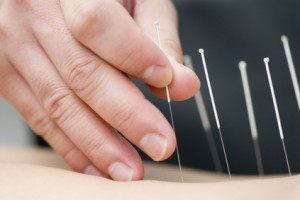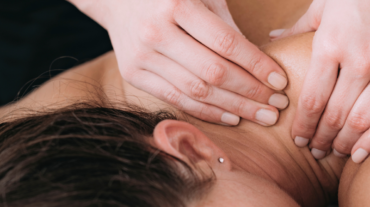
With science being so young (only approximately 150 years old), it still has a long way to go to discover how things work, especially ancient medicines. And since humans have been around for about 200,000 years, many medicines have likely come and gone, irrespective of science not yet having been developed. Because they developed so long ago, acupuncture and TCM are based on clinical evidence rather than science. That is to say, over many generations of practice, early Chinese doctors through trial and error discovered which combinations of acupuncture points worked to help heal the body. Through this trial and error, a system of diagnosis, now called TCM diagnosis, was developed. TCM theories can be complicated and require a great deal of learning, and primarily include Yin Yang Theory, Meridian Theory, and The Theory of 5 Elements.
In TCM, pain is considered to be blockage in pathways called meridians. These pathways, for the most part, carry Qi (energy), Blood, and Body Fluids (*note that some terms are capitalized to differentiate from their scientific definitions). Patterns of blockage are generally called Painful Obstruction Syndromes, and are further classified by the part of the body in which they are located, plus what type of blockage is present. With cancer, there tends to be an excessive amount of Heat present, but the general approach to treatment is the same: nourish organ systems and/or smooth the flow of energy in the body to help remove blockages. From this point, a TCM practitioner will determine what organ systems are involved, and will then continue to ask you questions and take your pulse to achieve a diagnosis. The pulse element of diagnosis in TCM is especially important as it is quite complicated, so make sure that you only have acupuncture performed by a Registered TCM Practitioner.
So what happens when you poke someone with an acupuncture needle? (More correctly, it's actually the combination of the right points that has the most dramatic effect most of the time, but a single point can still activate some things.) Well, neuroimaging studies have shown that acupuncture can relax certain areas of the brain responsible for pain reception. Ultrasounds show that acupuncture improves blood flow. And thermal imaging shows that acupuncture reduces inflammation where needed. Beyond this, many acupuncture meridians correspond to nerve pathways or arteries. Some of the major points, like one in your hand, sit where a few different nerves and blood vessels pass by. So although many are still sceptical about acupuncture, the evidence is growing in its favour, and more than likely science will 'catch up'. Since acupuncture can help in so many ways, let's just hope it doesn't take 5,000 years.
By Richard Lobbenberg, Acupuncturist and TCM Practitioner
Contact us for more information.
These links may also be helpful:
Acupuncture for Cancer Management and Prevention
Case Study: Acupuncture for Cancer Recovery with Fatigue







